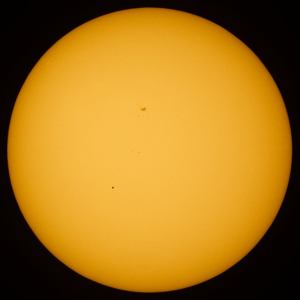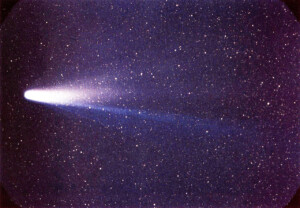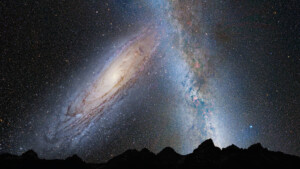-written by Chintan Patel, edited by Ankush Banerjee
The universe is vast with several massive events, and as you read this it’s expanding every second, compared to the size of the universe we are very insignificant.
To put this thought into perspective let us all have a look at some numbers, We live on the planet Earth which is almost 13,000 km in diameter orbiting the Sun which on an average is 150 million km away from us. The solar system extends further to the orbit of Neptune racing past the Kuiper belt through the Oort cloud finally leading into interstellar space.
So far we have covered 287.46 billion km, which is the radius of the solar system. Then there are other stars, dust clouds, Nebulae, etc which all orbit around the supermassive Black hole forming the galaxy we know as the milky way.
The diameter of the Milkyway is huge it becomes a bit difficult to talk in terms of kilometers, in astronomy and astrophysics we usually measure distance in terms of light-years. A light-year is a distance covered by light in one year at a speed of 300000000 m/s. The diameter of the Milky way is 105700 lightyears then there are billions of galaxies all together form the observable universe which spans up to 93 billion light-years.
The point being the universe is vast and there are a lot of amazing astrophysical phenomena and processes taking place it’s pretty easy to understand human life span is nothing at an astronomical time scale. So we will look at some of the events which we will be fortunate enough to watch and what is in store for the future generation.
Events till 2030
The first and most essential event we would and our future generation will keep observing for a long time is eclipses. Lunar eclipse as we know is quite common but a total solar eclipse is rare and holds significant importance for the astrophysics community. The next thing is the New Horizons spacecraft is set to leave the Solar system in 2029 covering a journey of 25 years since its launch in 2006. On November 12 2032 Mercury’s transit will occur, and planet Mercury will pass directly between the Sun and Earth. Mercury will be seen as a tiny dot moving across the Sun.

Events that will take place in the 2040s
Planet alignment of Mercury, Venus, Mars, Jupiter, Saturn, and the moon which is predicted to be in the crescent phase will occur on 8th September 2040. Another very interesting event will take place in the year 2040, the great red spot of Jupiter will become circular as per the calculation of the reduction rate stands as of now.
The decade 2040s sure is a very busy decade for Astrophysicists. In May 2044 the METI message cosmic call 2 sent from Evpatoria planetary radar will reach its destination 55 Cancri which is a binary star system located in the constellation of Cancer. The system consists of a K-type star along with a small red dwarf. As of now, 5 extrasolar planets are known to orbit 55 Cancri. METI has sent messages to other star systems as well one of which will reach the HD 10307 in the same year in the month of September.
There is one more message sent by METI to a star system that looks promising. The METI message called “Teen age Message” will reach 47 UMa (UMa – Ursae Major) will reach in July 2047. 47 UMa is a yellow dwarf star about 46- lightyears from us in the constellation of Ursa Major, the intriguing thing is 47 UMa is very similar to Sun, it is also a main sequence star a bit hotter than the Sun having approximately similar mass as our Sun.
29th Feb 2048 there will be a rare Full Moon on leap day, this event happens roughly once in 100 years. In 2057 this year will see the very rare occurrence of two total solar eclipses in a single calendar year (on January 5 and December 26). The last time this occurred was 1889. The next time it will occur is 2252. 28 July 2061 Halley’s Comet reaches its perihelion, the closest point to the Sun the last return reached its perihelion on February 9, 1986.

Events that we will miss
Sadly for us, this generation we are gonna miss on some of the most spectacular events, the most famous one being the merger of Milkyway and the Andromeda galaxy. They are expected to merge in 5 billion years from now. Andromeda galaxy contains twice the number of stars than in Milkyway and it is coming our way at a speed of 113 km/s. We all have seen Andromeda appearing as a small dim fuzzy patch in the sky but as it approaches us in around 4 billions years the view of Andromeda would be breath taking.

Also by the time stars like Betelguse and Eta Carinae will explode into brilliant supernovae in next 1 million years we all will be long gone. Well this makes me really sad because for few weeks it would seem like Earth has two Suns, despite being thousands of light-years away their supernova will shine so brighter than the full moon and will also be visible during day time. Well the Night sky looks really flashy for the future Humans but they too will miss out on the events that are occurring now, one of the most important thing they will miss is eclipses, why would they miss… stay tuned for the next blog on Eclipses.
ENJOYED READING THIS ARTICLE? CONSIDER READING OUR BLOG ON THE NORTHERN LIGHTS
READ MORE ABOUT THE MERGER OF ANDROMEDA AND MILKY WAY HERE



